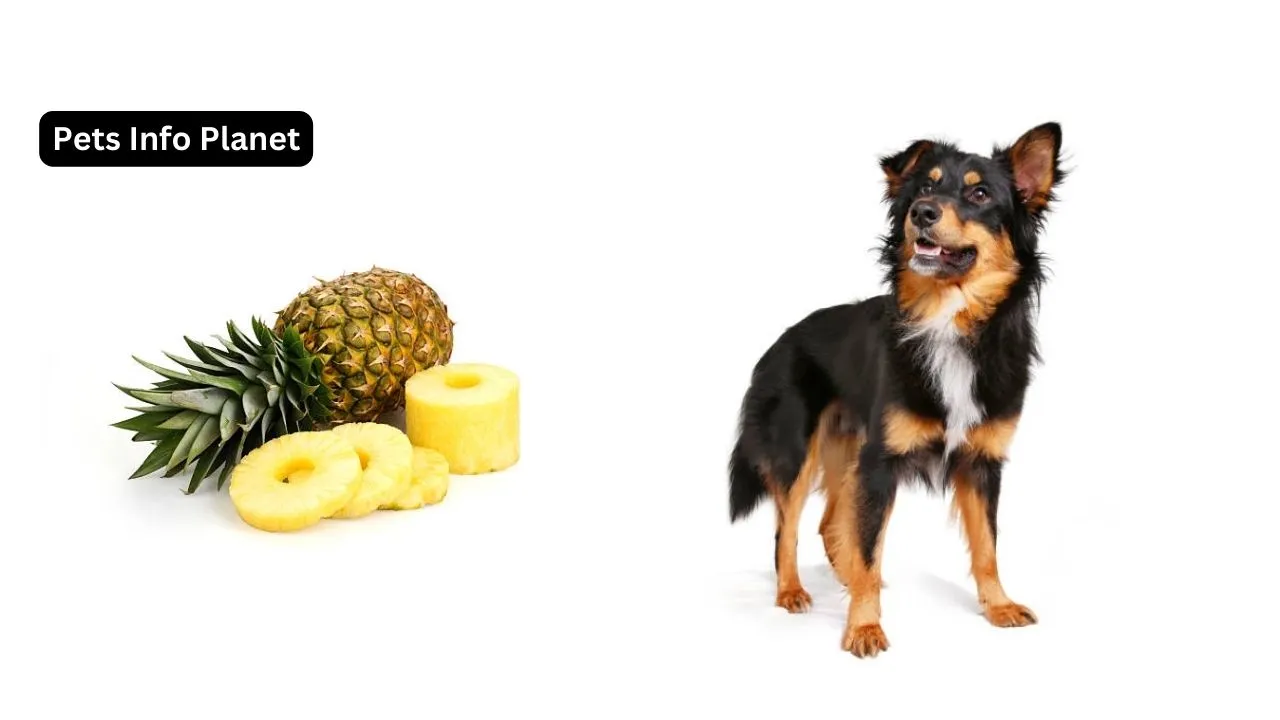Welcome to our informational guide on “Can dogs eat pineapple?” If you’re a dog owner curious whether pineapple is a safe and healthy treat for your furry friend, you’ve come to the right place. In this article, we will provide you with professional, engaging, and informative insights into the dietary considerations for dogs when consuming pineapple. We’ll explore the potential benefits, any potential risks or side effects and offer guidelines on how to incorporate this tropical fruit into your dog’s diet safely. So, let’s delve into the world of dogs and pineapple to ensure your pet’s well-being and happiness.
Is pineapple good for dogs?
Is pineapple good for dogs? This is a question that many dog owners have pondered. The answer is yes, in moderation. Pineapple can be a healthy and tasty addition to your dog’s diet. This tropical fruit contains essential vitamins and minerals, including vitamin C and manganese, which can support your dog’s immune system and promote overall health.
Pineapple is also rich in fiber, which aids in digestion and can help regulate bowel movements. However, it’s important to note that small, manageable amounts of pineapple should be given to dogs. The high sugar content of pineapple can be harmful if consumed in excess, leading to digestive upset or weight gain.
Additionally, the pineapple’s tough outer skin and core should be removed before feeding it to your dog, as they can pose a choking hazard. As with any new food, it’s always best to introduce pineapple gradually and monitor your dog for adverse reactions. Consulting with your veterinarian is also recommended to ensure that pineapple is suitable for your dog’s specific dietary needs.
Can dogs safely eat pineapple?

Yes, dogs can safely eat pineapple in moderation. Pineapple is a tropical fruit that offers a range of health benefits for our canine companions. Packed with vitamins, minerals, and antioxidants, it can contribute to a well-rounded and nutritious diet for dogs. However, preparing the pineapple appropriately is crucial before offering it to your furry friend.
Remove the tough outer skin and core, as these can be challenging for dogs to digest. Additionally, feeding pineapple in moderation is vital, as the natural sugars in the fruit may lead to digestive issues if consumed excessively. Always consult with your veterinarian before introducing new foods to your dog’s diet, but in general, a small amount of fresh, ripe pineapple can be a tasty and healthy treat for your pet.
How many pineapples can dogs eat?
The number of pineapples dogs can eat depends on a few factors, including the size of the dog, their tolerance, and any underlying health conditions. While pineapple can be a healthy dog treat, it should be given in moderation. Too much pineapple can lead to digestive upset, diarrhea, or weight gain due to its natural sugar content. As a general guideline, offering small, appropriate portions of pineapple as an occasional treat rather than a regular part of their daily diet is best. It’s always recommended to consult your veterinarian to determine the appropriate serving size and frequency based on your dog’s needs and overall health.
Can dogs eat pineapple juice?

Can dogs eat pineapple juice? While pineapple can be a safe treat for dogs in moderation, the same cannot be said for pineapple juice. Pineapple juice is not recommended for dogs due to its high sugar content and potential for digestive issues. The concentrated sugars in pineapple juice can cause an upset stomach and diarrhea or even contribute to dog weight gain.
Moreover, some commercial pineapple juices may contain added ingredients like preservatives or artificial sweeteners, which can harm dogs. If you’re looking to offer your dog the benefits of pineapple, it’s best to stick with fresh pineapple slices in small, appropriate portions and avoid serving them pineapple juice. As always, please consult your veterinarian before introducing new foods or beverages to your dog’s diet to ensure their safety and well-being.
Can dogs eat pineapple cores?
Can dogs eat pineapple cores? It is generally recommended to avoid giving dogs pineapple cores. While the flesh of pineapple can be a healthy treat for dogs when given in moderation, the rugged and fibrous nature of the fruit poses a potential choking hazard and can be difficult for dogs to digest. The body is dense and contains a higher concentration of fiber, which may lead to gastrointestinal discomfort or blockage if consumed in larger quantities.
To ensure the safety of your furry friend, it’s best to remove the core before offering pineapple to your dog. Stick to feeding them the ripe, juicy fruit sections without the body, and continuously monitor their response to new foods. If you have any concerns or questions, consult your veterinarian for personalized advice regarding your dog’s dietary needs.
Can dogs eat all parts of a pineapple?

No, dogs should not eat all parts of a pineapple. While the flesh of pineapple is generally safe and beneficial for dogs when given in moderation, there are parts of the pineapple that should be avoided. Here’s a breakdown of the different components:
Flesh:
The juicy and fleshy pineapple part is safe for dogs to consume in small, appropriate portions. It contains vitamins, minerals, and fiber that can benefit their health.
Skin:
The tough outer skin of the pineapple should not be fed to dogs. It is difficult to digest and poses a choking hazard.
Core:
The core of the pineapple is fibrous and can be difficult for dogs to digest. It is best to remove the body before offering pineapple to your dog.
Leaves:
The pineapple plant’s spiky leaves are unsuitable for dog consumption. They can cause irritation or obstruction if ingested.
To ensure the safety of your furry friend:
- Stick to feeding them the ripe flesh of the pineapple while avoiding the skin, core, and leaves.
- Always introduce new foods gradually and monitor your dog for any adverse reactions.
- Consult your veterinarian for personalized advice if you have any concerns or questions.
How should I feed my dog pineapple?
When feeding your dog pineapple, it’s essential to follow these guidelines to ensure their safety and enjoyment:
- Choose ripe pineapple: Opt for a ripe pineapple that is sweet and juicy. Avoid overripe or underripe pineapples, as they may be less palatable or cause digestive issues.
- Remove the skin and core: Peel off the tough outer skin of the pineapple and discard it. Additionally, remove the fibrous body as it can be difficult for dogs to digest and pose a choking hazard.
- Cut into small, bite-sized pieces: Slice the pineapple into small, manageable chunks appropriate for your dog’s size. This makes it easier for them to chew and digest.
- Offer in moderation: Pineapple should be given to dogs in moderation. It is a treat and should not replace their regular balanced diet. Too much pineapple can lead to digestive upset or weight gain due to its natural sugar content.
- Introduce gradually: If it’s your dog’s first time trying pineapple, introduce it gradually. Start with a small piece and monitor their response. Look for any signs of digestive discomfort or allergic reactions.
- Monitor for adverse reactions: Keep an eye on your dog after they consume pineapple. If you notice any vomiting, diarrhea, or other signs of distress, discontinue feeding pineapple and consult your veterinarian.
Every dog is unique, and some dogs may have specific dietary restrictions or allergies. It’s always a good idea to consult with your veterinarian before introducing new food to your dog’s diet to ensure it aligns with their needs and overall health.
Read More:
Can Dogs Eat Raw Chicken: Comprehensive Guide For Dogs
Can Dogs Eat Eggs: Comprehensive Guide For Dogs
Can Dogs Eat Mushrooms : Best Guide For Dogs Feeding
Conclusion
In conclusion, while dogs can enjoy the nutritional benefits of pineapple, responsible feeding is crucial. Opt for ripe pineapple, remove the skin and core, and offer small, bite-sized pieces in moderation. Watch for adverse reactions and consult your veterinarian before introducing pineapple or any new treat into your dog’s diet. Following these guidelines ensures a safe and enjoyable experience, contributing to your pet’s overall well-being.

